Preventing e-bike theft is important since potential loss to thieves keeps many first-time buyers out of the market. We look at two solutions: one preventative, one centered upon recovering bikes once stolen. The (overblown) threat of battery fires seems to be receding and touring e-bikes can go further than ever before.
Contents
The Latest in Battery Fires
NYC has seen a wave of negative publicity for the destruction of property and loss of life due to e-bike battery malfunctioning over the last 2-3 years. Despite the problem, the public has continued to acquire e-bikes and e-scooters. This, however, year has seen a noticeable drop in fire incidents.
One reason is the publicity angle in itself—bad publicity feeds off itself and once the spotlight has shifted, the problem is seemingly solved, or reveals that in fact there was never as big of a problem in the first place.
Outside of appearances, so far this year fire incidents are down along with fatalities compared to last year. The vigilance of NYC authorities in eliminating the main cause, namely poor quality batteries offered cheaply, has paid off. Campaigns to educate e-bike users to charge batteries in safe boxes or outdoors or in fire proofed cabinets have also been successful.
Meanwhile the European Union has enacted laws that came into effect in August of this year, regulation 2024/1542, requiring stricter manufacturing and disposal standards. Stricter is maybe an understatement given the comprehensive scope of the regulation aiming to ensure only the safest and cleanest (greenest) batteries end up in bicycle ecosystems. Non-compliant batteries cannot be imported or distributed within the EU. Aspects targeted cover materials that must include recycled elements, use of non-hazardous materials, clear labeling, and performance and durability stipulations. Consumers may not have access to the cheapest power units, but certainly the safest.
Design Directions
E-bike Ranges Continue to Increase
Batteries are the key to going further and increasing the time between charging sessions. While all e-bikes can benefit from the ability to go further on each charge, it doubly goes for cargo bikes, especially those used in last mile logistics.

Engwe has just delivered the LE20 to the market which raises the bar in no uncertain way—the peak range is 350km. A sub $2k price point will make it a no-brainer for consumers who may have been just about to take the plunge but could not justify it given persistent cost of living pressures. By way of contrast, the LE20 can carry as much as a comparable Tern model, yet costs a lot less. The extra distance comes by way of two batteries, but you’re hard pressed to notice; conspicuous they are not.
The ability to increase the time between charges as well as extend aggregate travel distances is one thing. A wide range of modular accessories also expresses another key direction e-cargo bikes (aimed at car replacement) are heading.
In sum, increasing the range is becoming the USP to target in an increasingly competitive market. Expect to see accelerated progress and innovation in this dimension amongst brands over the next few product cycles.
Advancing Long Range Design – Touring
When talking range, you’re talking “touring” and 2024 has so far seen several models that advance design in the category.
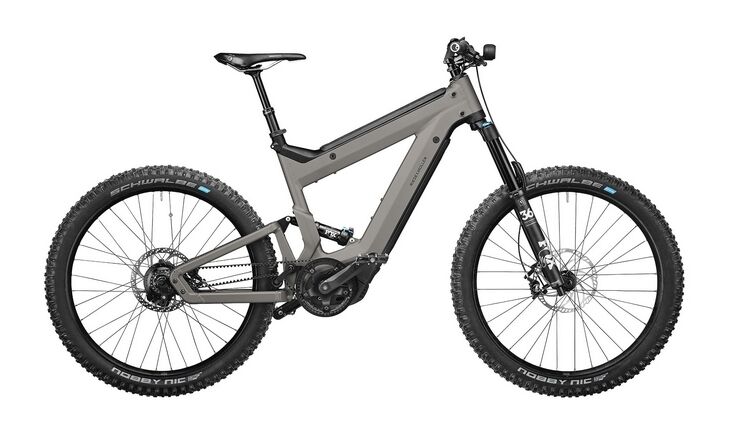
Appearing as an eMTB at first glance, Riese & Muller Superdelite Moutain Rohloff sports twin batteries delivering 1,125 Wh capacity, 500 Wh for the top tube unit; 625 for the down tube. Relatively heavy at around 28kg, the price weighs the heaviest—more than 9k GBP. Premium brands can command these price points though, and RM have a track record for reliability.
Good to see the telltale TIG welds in which no attempt has been made to “polish” them. Grinding the scales weakens a weld and only delivers an aesthetic improvement for those who don’t like their bike’s frame looking raw.
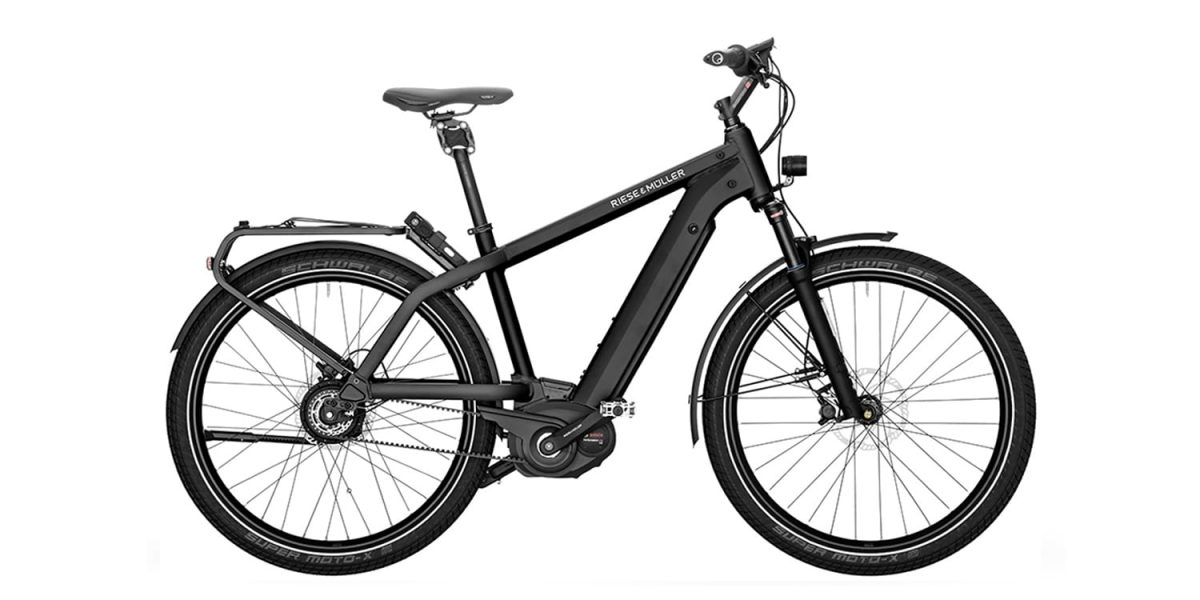
Riese & Muller’s Charger4 GT Vario sits clearly in the Grand Tourer category at a sub 6k GBP price point. It could probably handle gravel but is otherwise not meant for off road trips. The single 750 Wh battery is beefy but certainly limits the range. Cyclists could comfortably commute with this, the suspension seat post adding a questionable—practically speaking—extra layer of padding.
At around a 40% discount to the Charger4, the Specialized Turbo Vado 4.0 gives a range of some 110km (Turbo mode) and a good deal longer at lower levels of assist.
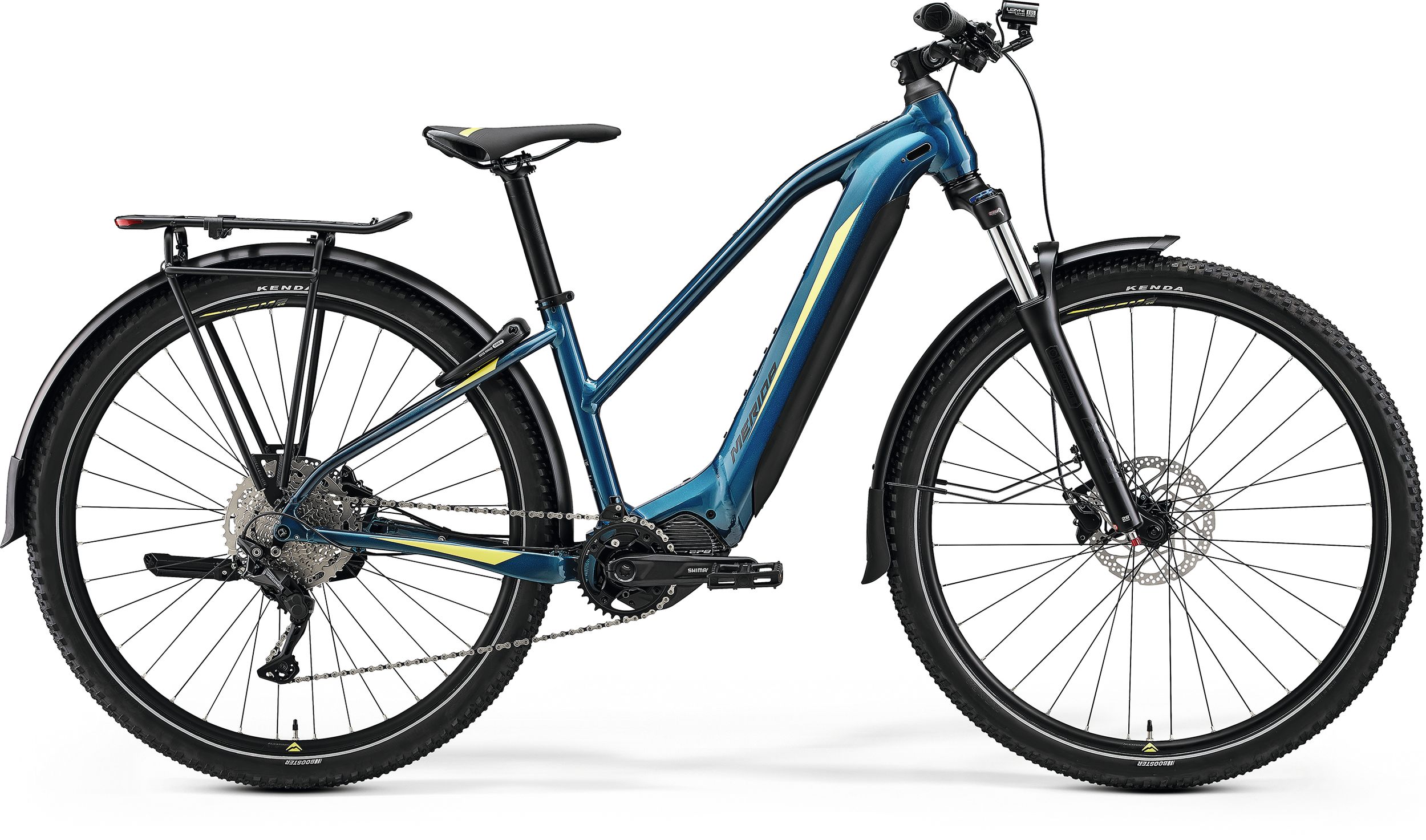
Merida’s e.BIG Tour 400 EQ is available at a similar price point to these two, but packed in a considerably more appealing aesthetic. The upgrade in spec from the previous version is incremental—but an improvement is an improvement.
Typical of tech products across all niches, the price has not changed a lot: the E7000 motor is now EP8 improving torque from 75 to 85 Nm and an extra 130 Wh over the previous 500 Wh battery. (Technical innovation is inherently deflationary, according to a widespread view amongst financial professionals. Inflation, they say, is a function of the central banking system’s love of printing money, carried out in order to ensure the system’s survival).
The Moustache Samedi 27 Xroad 3 Open is worth a mention. “Open” refers to the step through frame which also opens it up to a wider range of cyclists. A beefy 625 Wh battery is the key to achieving longer distances. Fullycharged.com declares the Xroad series as “the most versatile” to have hit the market so far. The Road 3 Open claims a position relative to its appeal to a particular market segment while drawing from the collective design advantages—including upright geometry, adjustable stem, mixed-purpose tyres and rear rack—of the series as a whole.
Minimalism
Minimalist design, the reduction of a product to essentials, where form is an extension of function without necessarily showing it. Gogoro’s ill-fated Eeyo and VanMoof’s design directions are representative examples of this, though success or failure is due to the interaction of many factors and not simply weakness in one area; design was not the problem in either case.
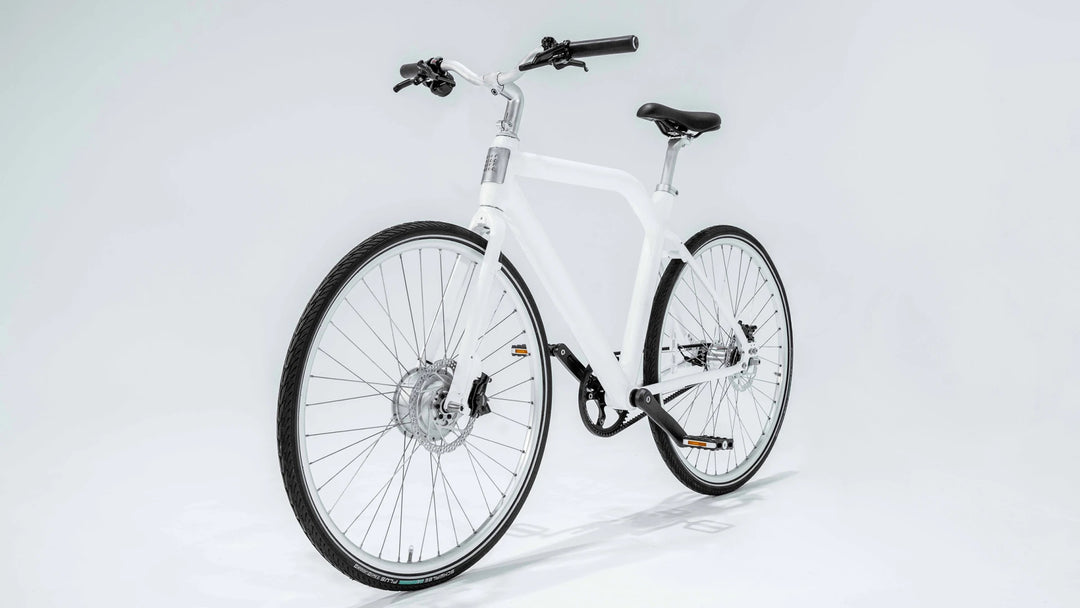
Biomega’s vision and mission consists of the broad aim to create bikes that can replace cars in urban environments. The company’s new BER features lightweight alloy, lights integrated into the handlebars and seat post, carbon belt drive, and head tube charging port are some of the ingredients.
A key element is the uniform sizing of the tubing, particular the down tube, getting away from the standard look of e-bikes that rely on the down tube to stow the battery. The ultra slim battery is supplied by a Taiwanese manufacturer and allows some 110km of range.
Now, classic bikes from the 1980s, 70s, 60s, or earlier often become member of prized bike collections. The designer of the BER Jens Martin Skibsted has a history of creating valuable bike designs which can be found in prestigious museums such as New York’s MoMA. One worth $1000 originally, sold on eBay for more than $8000. Hence Biomega suggests that in the BER, consumers get a functional urban vehicle and an asset that will appreciate in value from the beginning, which is surely a first in modern bicycle design.
High Tech Bike Finding
The United Kingdom certainly seems to be taking the lead when it comes to the big problem of bicycle theft. Here we’ll take a look at two companies providing products in this space.
A key factor preventing the much greater uptake of e-bikes by non-cycling members of the general public, the segment mainly driving e-bike growth, is the perceived high likelihood they will lose their expensive purchase to a thief.
BackPedal is an e-bike theft protection and recovery subscription service, with the emphasis mainly on the recovery. The tech is standard—blue tooth beacons and GPS trackers—with the real innovation being the comprehensive service that makes ample use of that tech which includes a nation-wide network of recovery agents. You could say that the protection stems from the approach to recovery: unless a thief takes a lot of extra effort to cover their tracks, discovery is more likely that not. Since commencing operations 18 months ago, BackPedal claims a success rate of 89%.
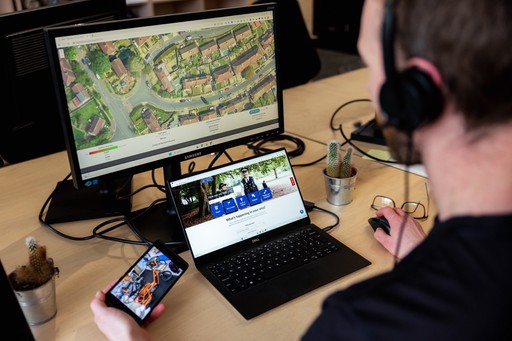
The company handles everything, including communications with the police. Personnel come from military, policing, and security-related professions. The agents are listed on a database and are contacted—and thus mobilized only then—whenever the company tackles a case of theft in their area. The key to recovering a bike is acting quickly and in some cases negotiating the tricky issue of trespassing onto private property in order to take back possession of a bike.
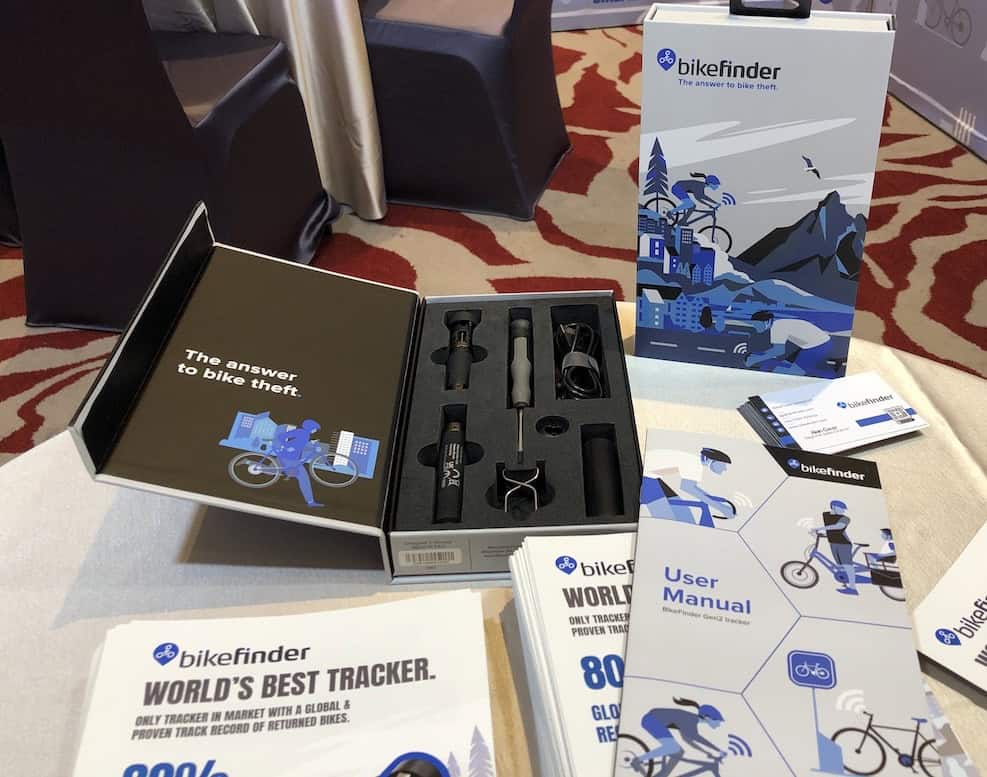
At this year’s Taichung Bike Week (a unique annual OEM trade show held in the heartland of high-end bike production), BikeFinder, established in 2015, returned for a second year. Also available as a subscription, the company claims their product as the “world’s best tracker” with an “80% global recovery rate.”
As the unit fits inside the handlebars or the frame, only the most cunning and up-with-the-news thieves may be in with a chance of finding it. The BikeFinder works with a white label app to provide worldwide coverage and also offers a fleet management solution. Charging is from the e-bike or an external source.
The BikeFinder is a tech-focused solution whereas BackPedal offers a complete recovery service. Each represents a distinct advance in the ongoing battle against thieves. Expect major advances in this area as other companies move into the space in the near future.
